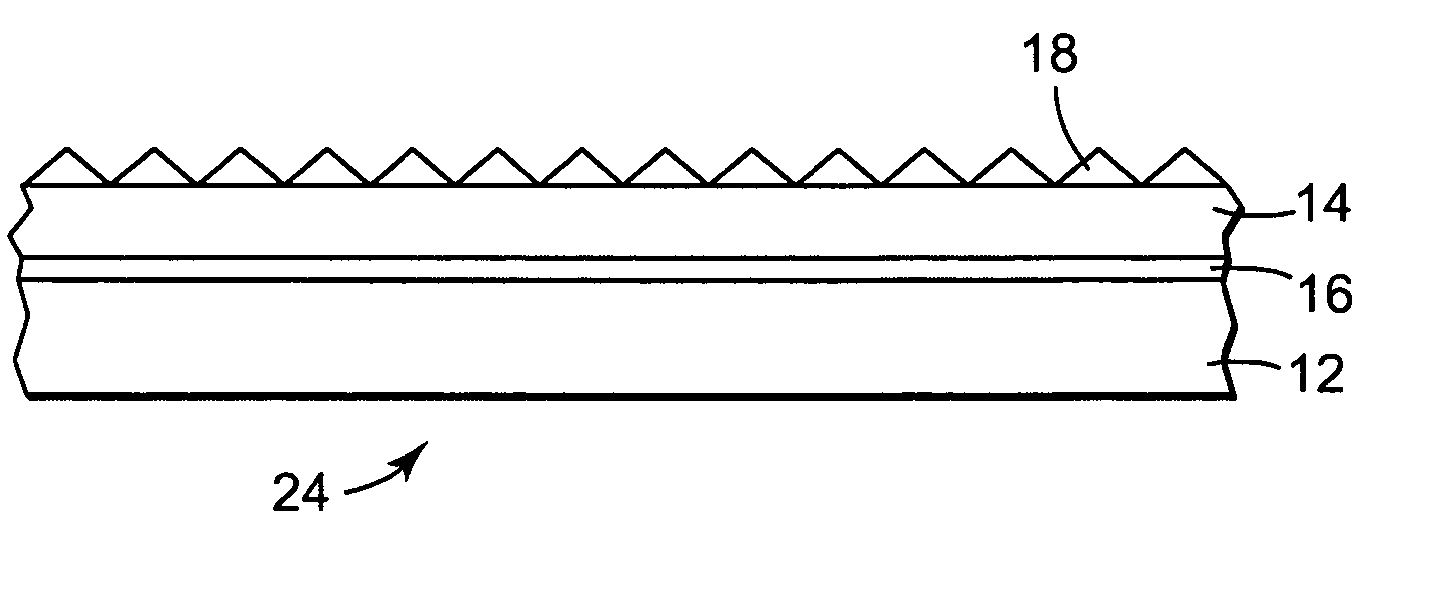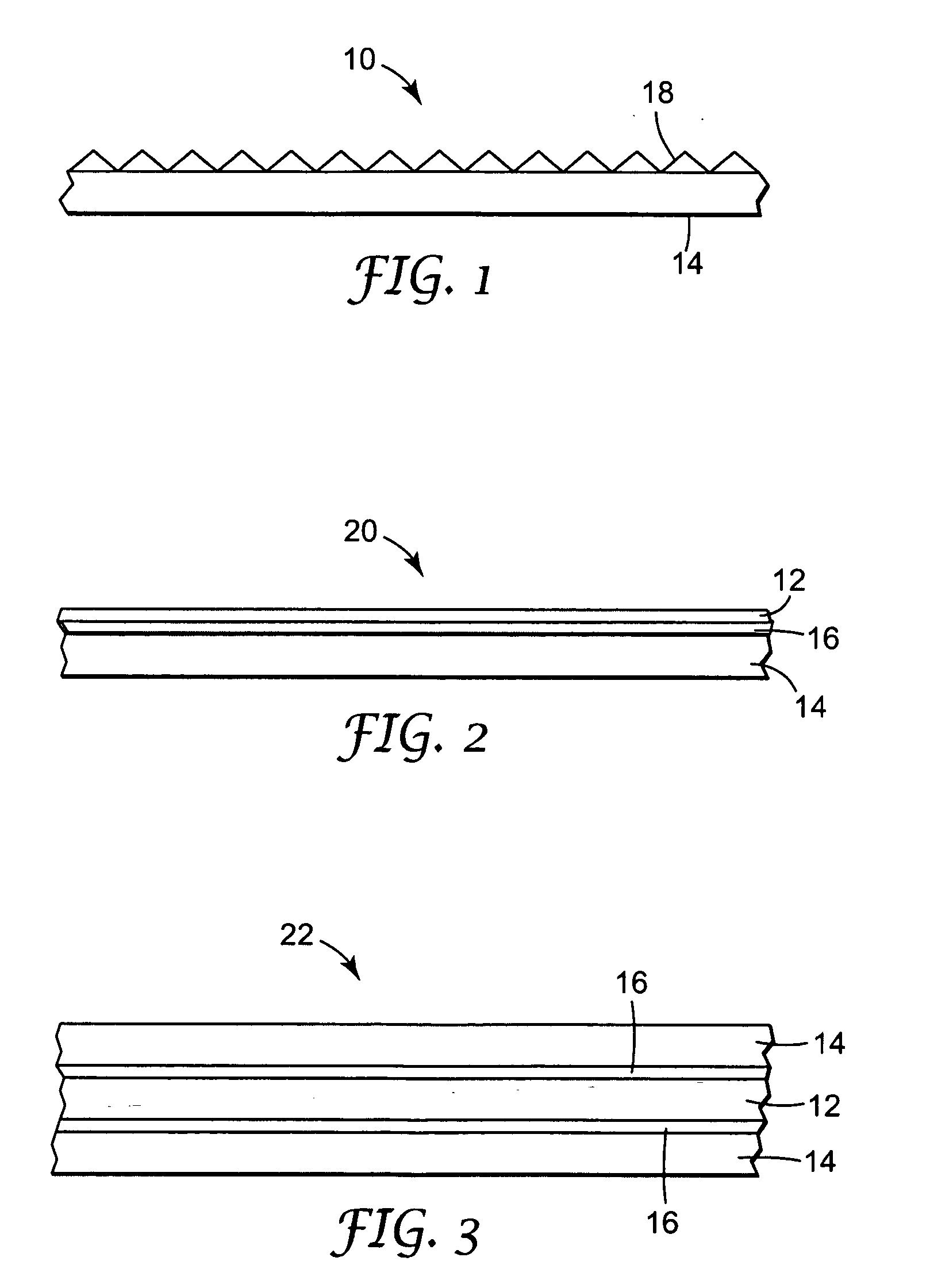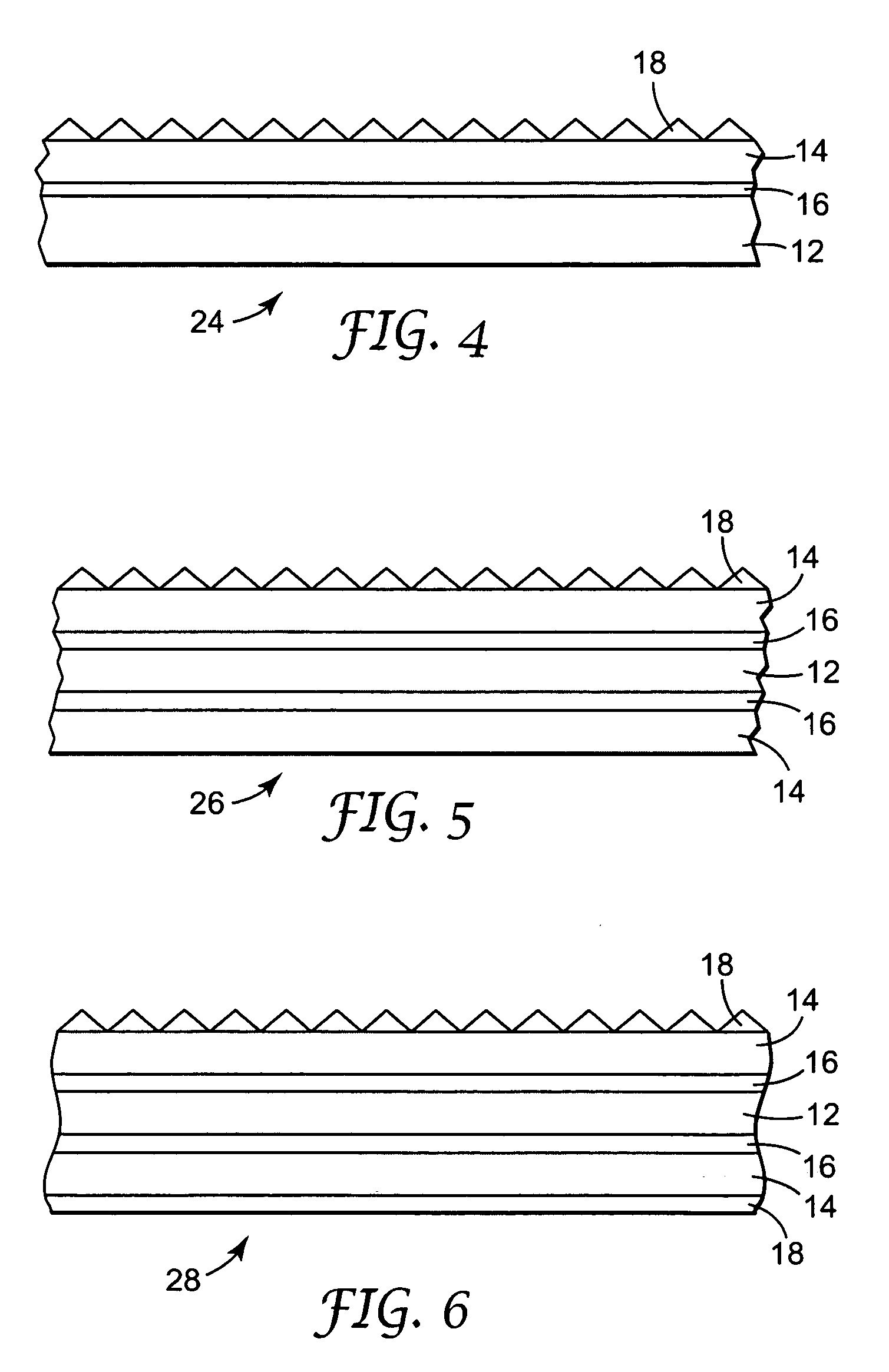Optical films incorporating cyclic olefin copolymers
a technology of optical films and copolymers, applied in the field of multi-layer polymeric optical films, can solve problems such as dimensional instability and film formation, and achieve the effect of improving adhesion
- Summary
- Abstract
- Description
- Claims
- Application Information
AI Technical Summary
Benefits of technology
Problems solved by technology
Method used
Image
Examples
example i
[0134] UV-curable materials were adhered to norbornene-based cyclic olefin substrates. Norbornene-based cyclic olefin substrates include norbornene-based cyclic olefin films and norbornene-based cyclic olefin layers on the surface of optical bodies. The norbornene-based cyclic olefin substrates were treated with air corona immediately prior to coating with a curable material. To accomplish this in-line surface treatment, a corona treatment system 52, as shown in the representative arrangement of FIG. 10, was constructed by mounting a ceramic-tube corona electrode 54 above the bed of a knife coater 56 upstream of the coating knife 58. Untreated film 60 is continuously fed in the direction of arrow 66 through the corona treatment system 52. The untreated film 60 is corona treated at corona electrode 54. Corona-treated film 62 continues through coating area where curable material 64 is applied. Coating knife 58 levels the curable material 64, which is subsequently cured. In a preferred...
example ii
[0161] UV-curable materials were adhered to norbornene-based cyclic olefin substrates. Norbornene-based cyclic olefin substrates include norbornene-based cyclic olefin films and norbornene-based cyclic olefin layers on the surface of optical bodies. The norbornene-based cyclic olefin substrates were treated with nitrogen corona prior to coating with a curable material. To accomplish this surface treatment, a corona treatment system 68, as shown in the representative arrangement of FIG. 11, was constructed by mounting a silicone-sleeve corona electrode 70 within a housing 72 for containment of a controlled atmosphere. Housing 72 is operatively connected to the bed 76. Untreated film 78 is continuously fed in the direction of arrow 80 into the housing 72. The untreated film 78 is corona treated at corona electrode 70. Corona-treated film 82 continues through the treatment system 68. In an embodiment, the corona-treated film 82 continues to a coating and a curing station (not shown) ad...
example iii
[0170] The methods of this example can be used to form films, optical bodies or portions of optical bodies that are suitable for use in the methods of the present disclosure.
[0171] A multi-layer reflective polarizer (e.g., an optical film) was constructed with first optical layers comprising PEN (polyethylene naphthalate) and second optical layers comprising coPEN (copolyethylene naphthalate). The PEN and coPEN were coextruded through a multi-layer melt manifold and multiplier to form 825 alternating first and second optical layers. This multi-layer optical film also contained an additional two internal layers and two external protective boundary layers comprising the same coPEN as the second optical layers for a total of 829 layers with a thickness of 3.7 mil. This multilayer reflective polarizer film will be referred to as “reflective polarizer A”. Similar reflective polarizers are available from 3M Company, under the tradename DBEF.
[0172] A norbornene-based cyclic olefin layer ...
PUM
| Property | Measurement | Unit |
|---|---|---|
| refractive index | aaaaa | aaaaa |
| elapsed time | aaaaa | aaaaa |
| elapsed time | aaaaa | aaaaa |
Abstract
Description
Claims
Application Information
 Login to View More
Login to View More - R&D
- Intellectual Property
- Life Sciences
- Materials
- Tech Scout
- Unparalleled Data Quality
- Higher Quality Content
- 60% Fewer Hallucinations
Browse by: Latest US Patents, China's latest patents, Technical Efficacy Thesaurus, Application Domain, Technology Topic, Popular Technical Reports.
© 2025 PatSnap. All rights reserved.Legal|Privacy policy|Modern Slavery Act Transparency Statement|Sitemap|About US| Contact US: help@patsnap.com



